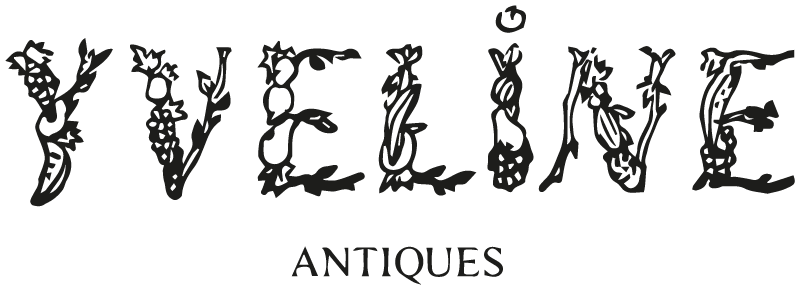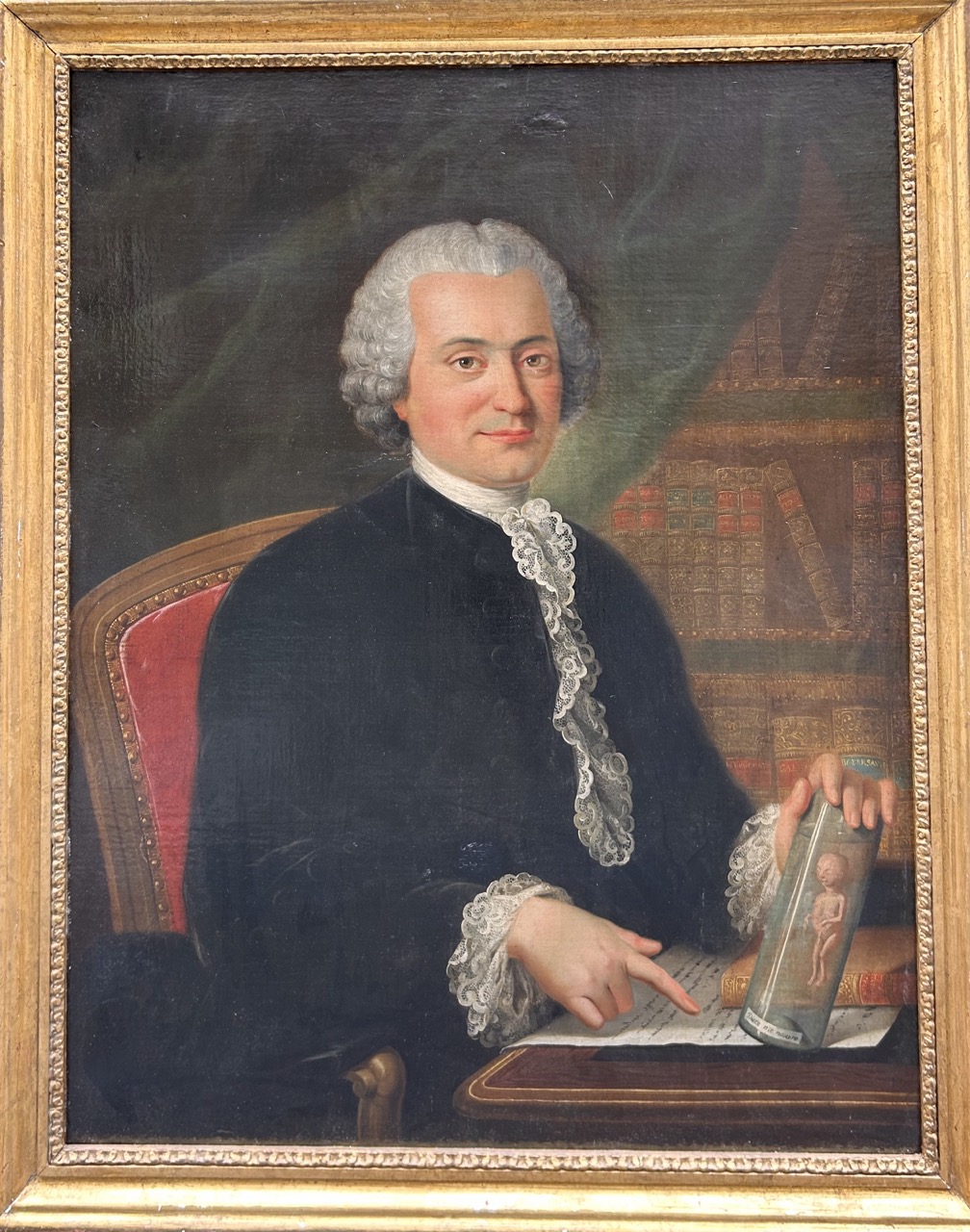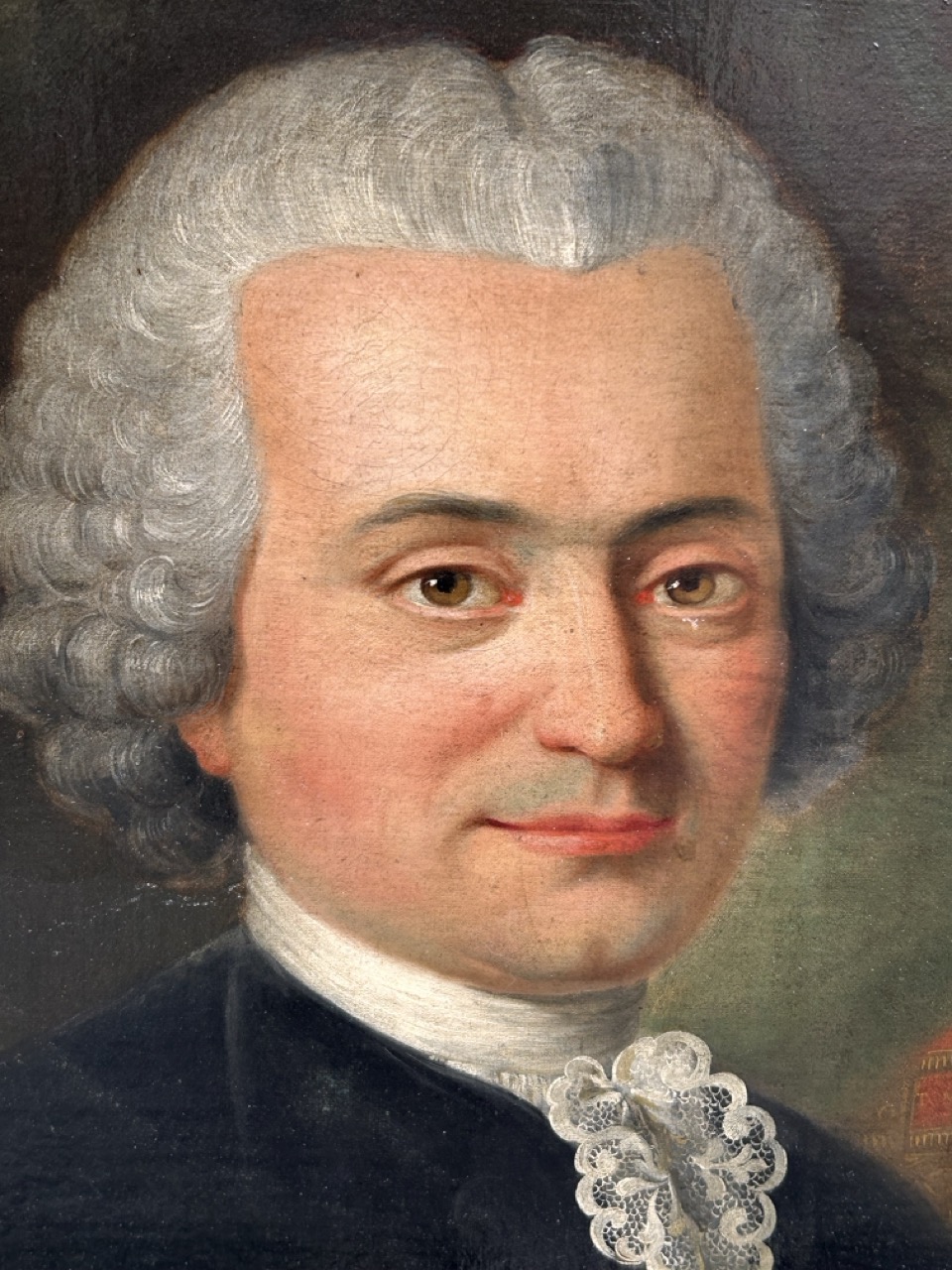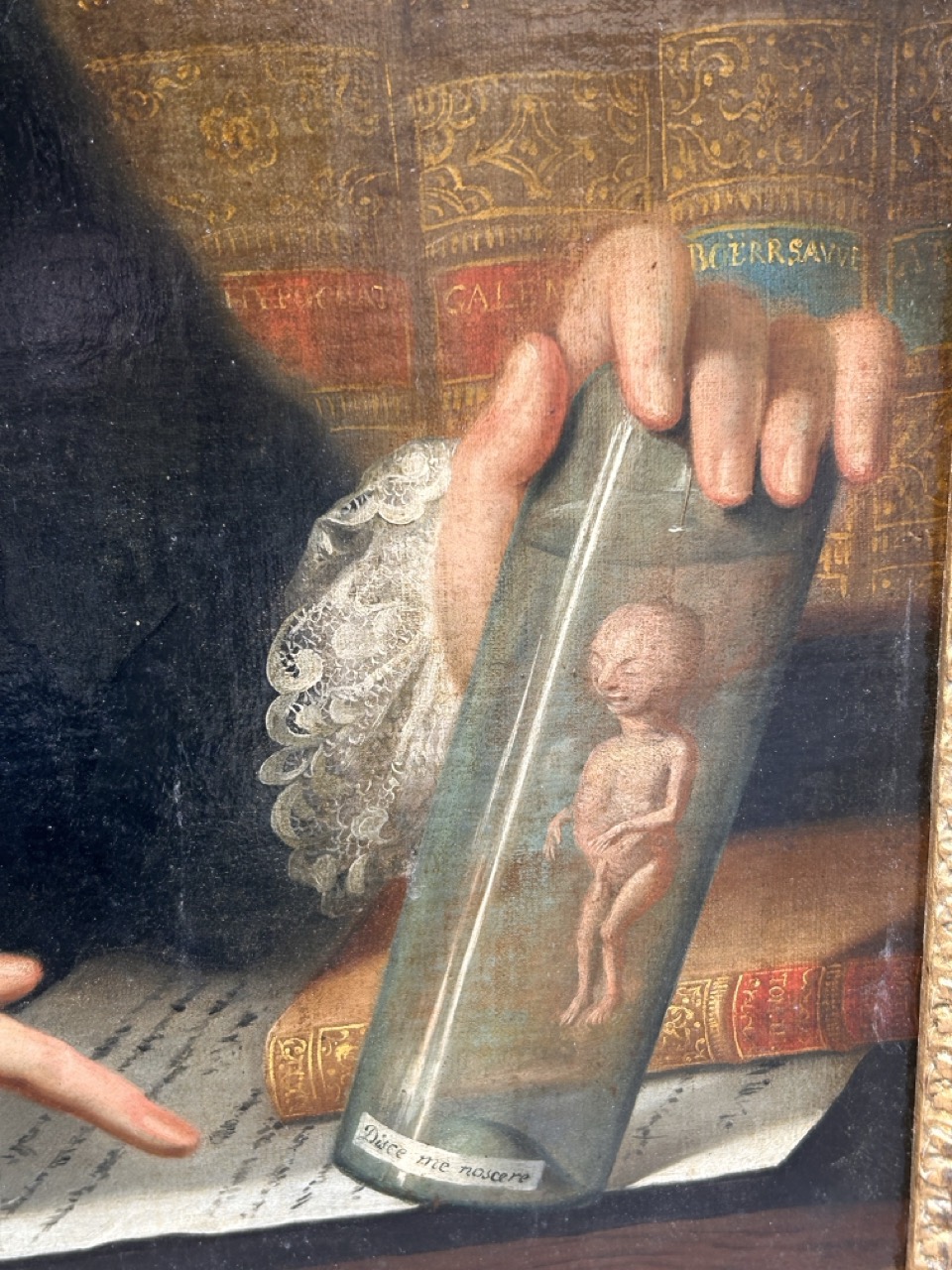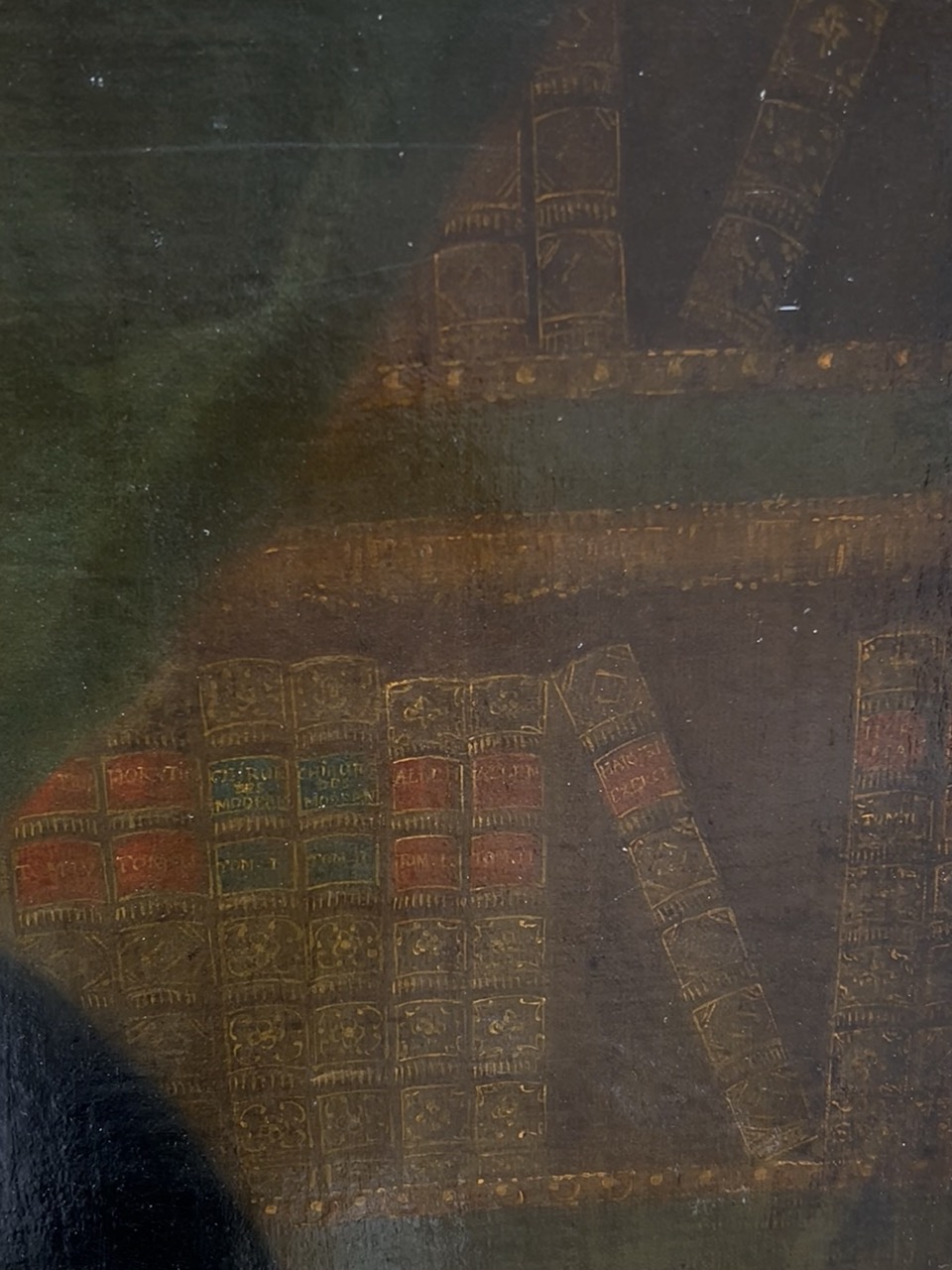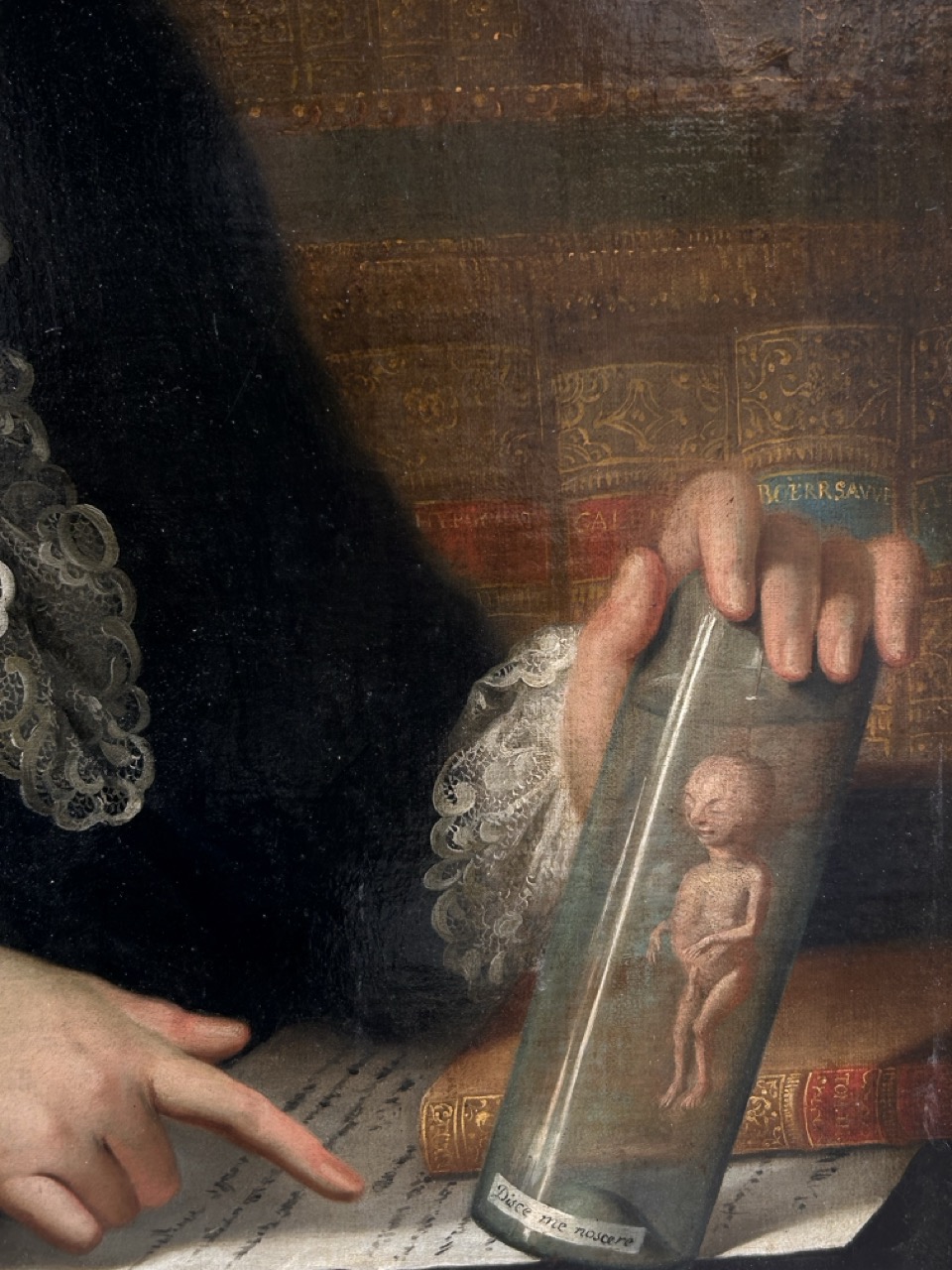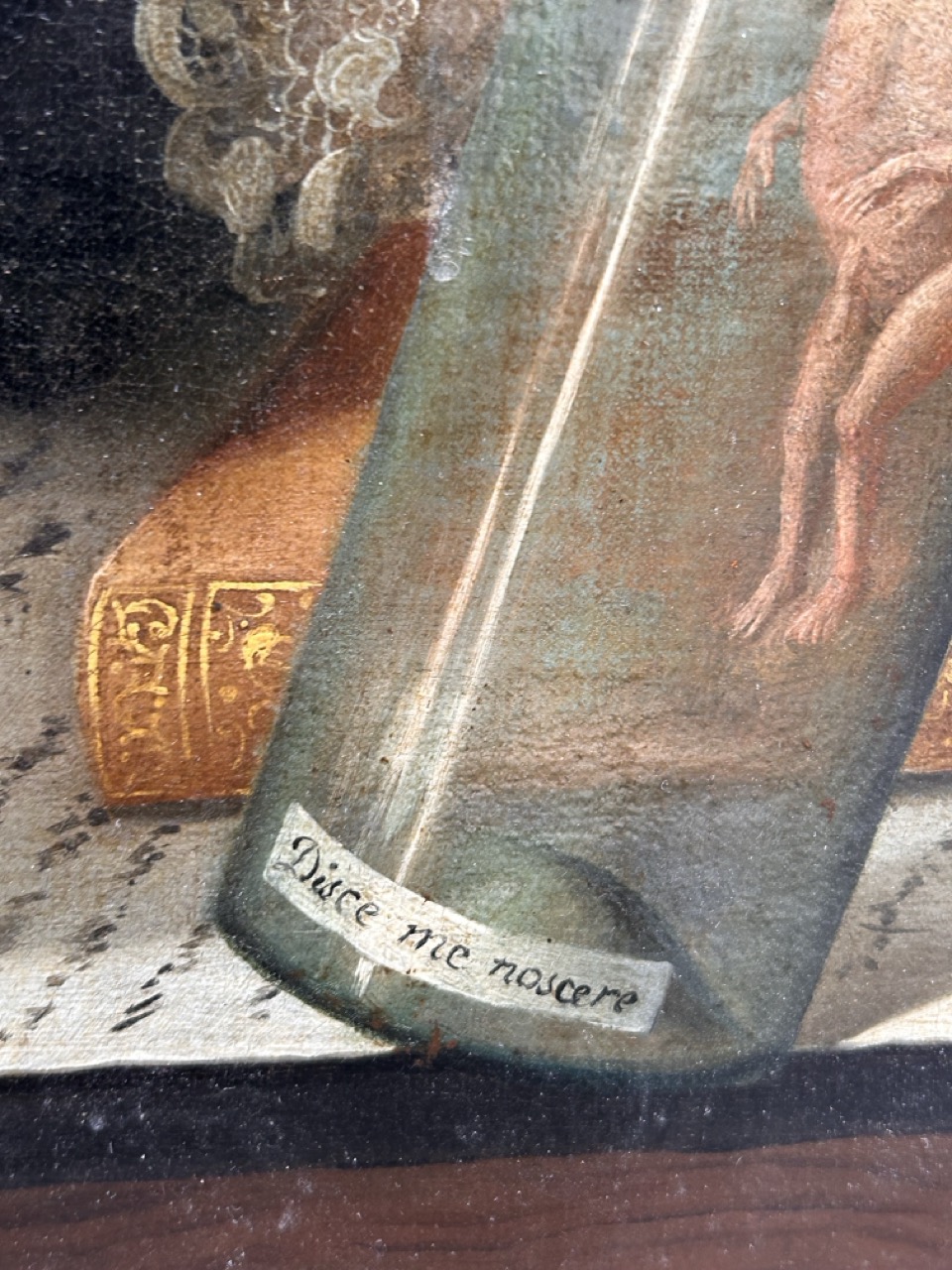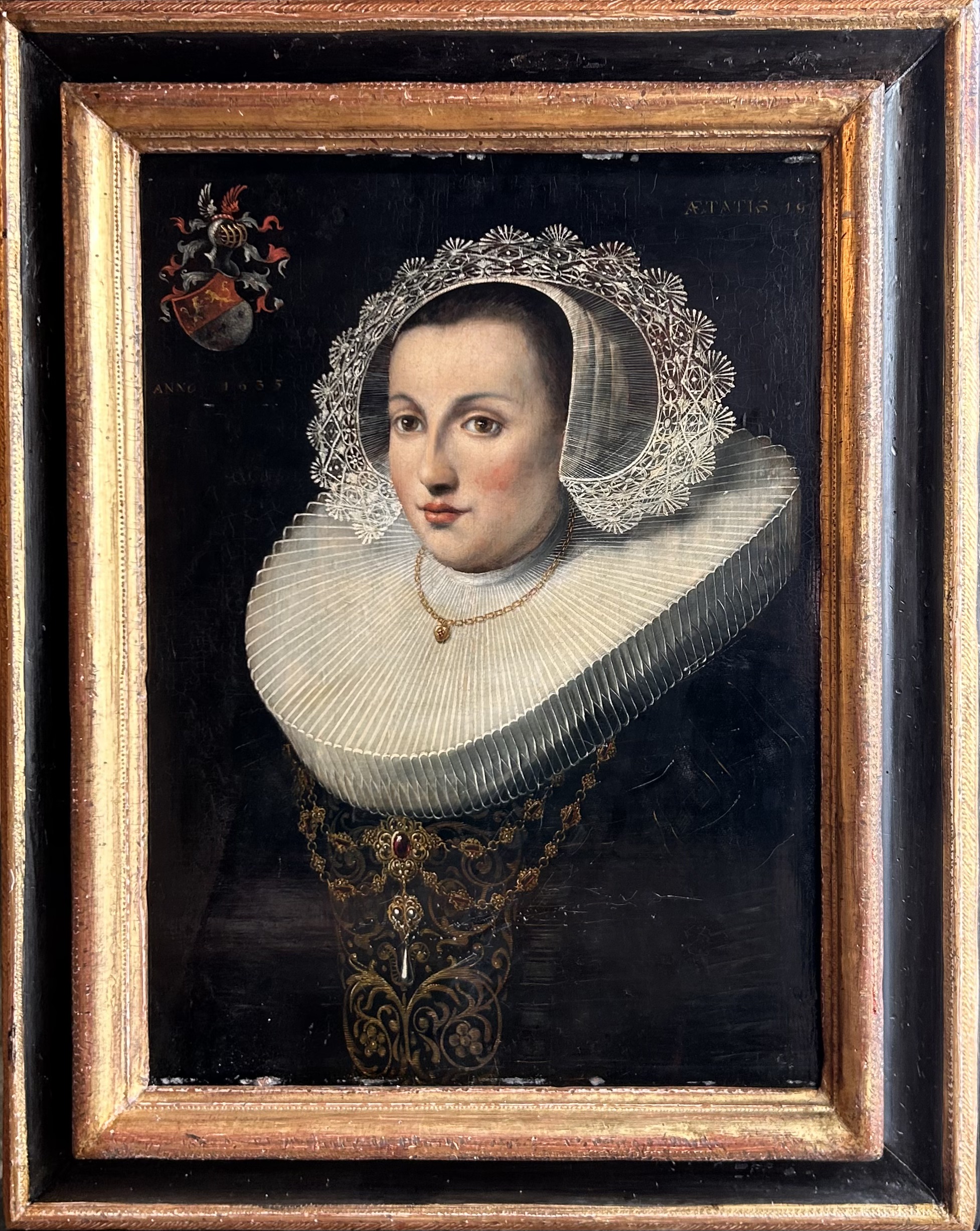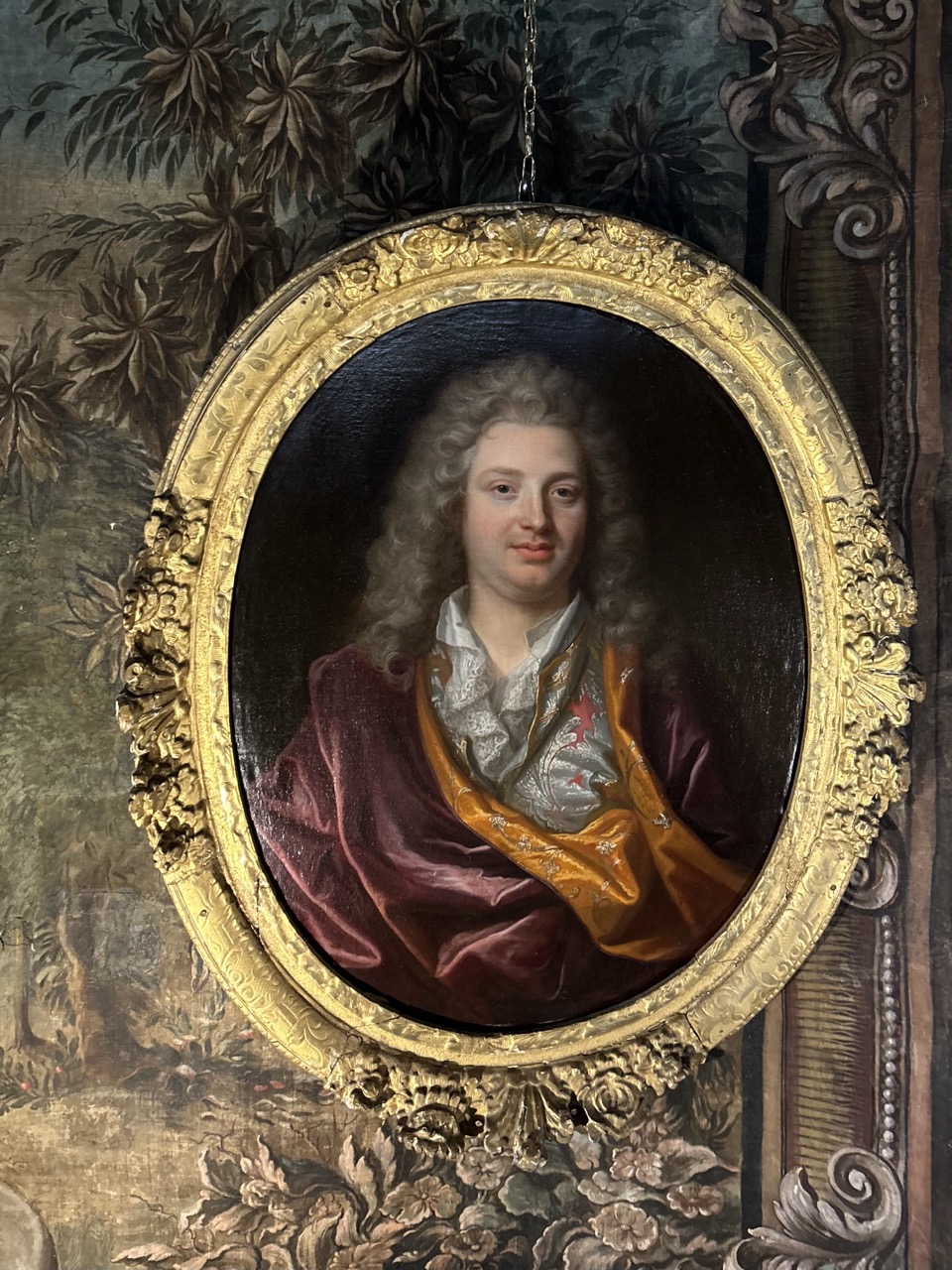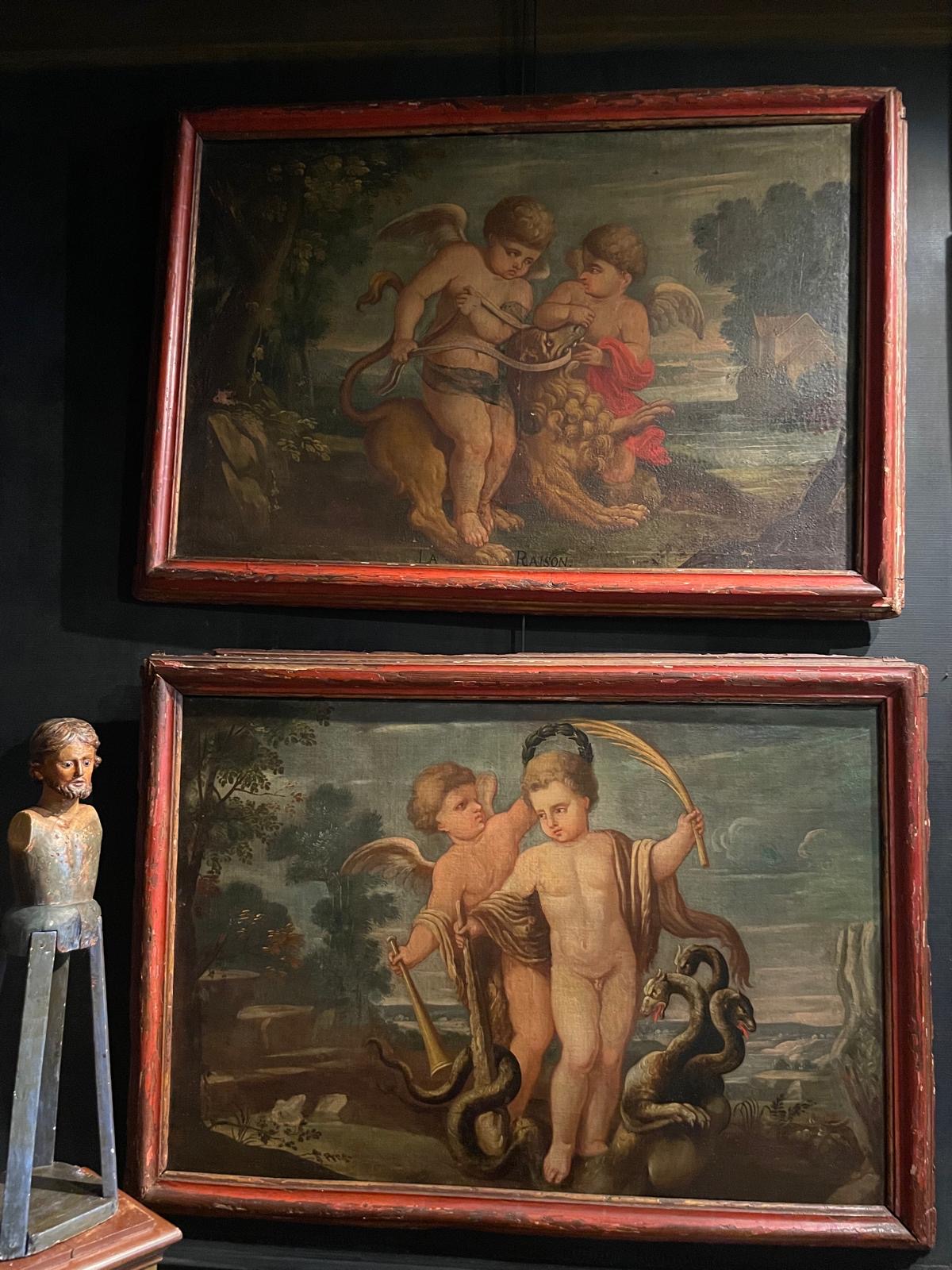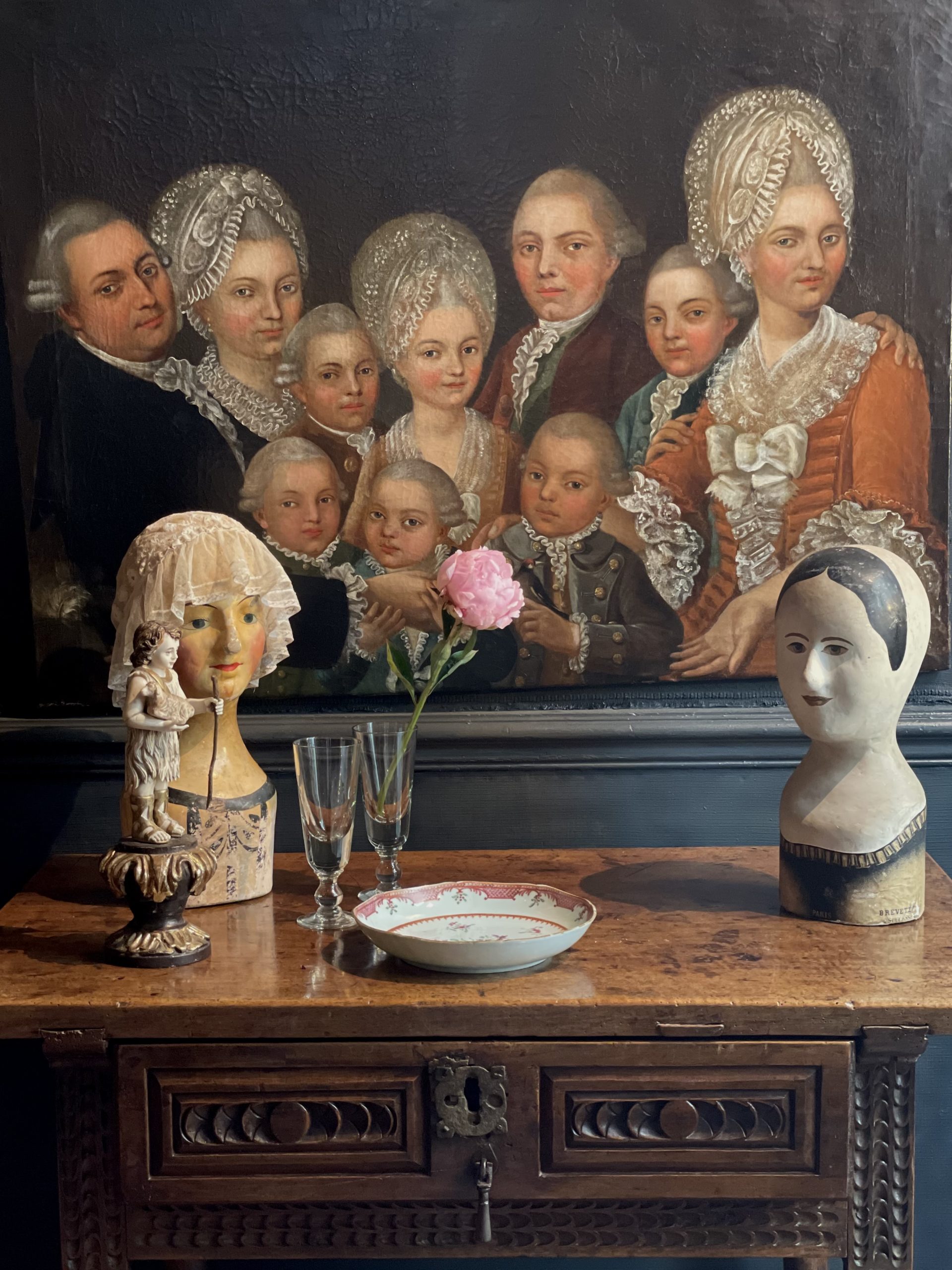“Portrait of the Doctor”, oil on canvas, probably representing Albrecht von Haller (1708-1777) Swiss physician, scientist, naturalist, thinker and literary critic. The doctor holds a jar containing a fetus. On the jar we can read the Latin formula “Disce Me Noscere”: get to know me. In the library in the background we read the names of Hippocrates, precursor of medicine in the 5th century BC in Greece, Galen, a Roman doctor, who understood, popularized and transmitted the knowledge of the Greek scholar. Galen left an immense work by inviting the methodical construction of the diagnosis. He is the founder of Western medicine, also the name of Boerhaave (1668-1738), Dutch botanist, doctor and chemist who renovated medical teaching, making the University of Leiden the first medical center in Europe at the beginning of the 18th century. And also Harvey, an English doctor from the 17th century. who is credited with the discovery and demonstration of general blood circulation.
Haller’s importance for the history of medicine is above all the role he played in anatomy. He is considered the father of modern physiology. By preparing around four hundred corpses he succeeded in describing the arterial network of the human body. He devoted other studies to blood circulation and the development of the embryo (formation of the heart and bones, appearance of malformations) Haller was at his time the most recognized disciple of the Herman Boerhaave school (1668-1738) who is considered by the encyclopedia as “the greatest theoretician we have ever had” on the basis of “his institutions of medicine, of which Doctor Haller has enriched the commentary with an infinite number of observations”. In addition to his numerous research, on embryology (he defends the theory of preformationism), the action of digestive juices, the formation of bones, respiration, the salivary glands, the vessels of the heart, congenital malformations.
Extremely respected, he is the spiritualist son de Boerhaave and great thinker of physiology which he himself defines as “the description of the events which agitate the animated machine”, that is to say without the aspect of the function which is only deduced as a consequence of exact anatomical knowledge.
In 1736, he left Bern for Göttingen. He created the anatomy institute and the botanical garden there, and opened the first obstetrics clinic in Germany. He divides his life between Göttingen where he is president of the college of surgeons of the Royal Society of the city and professor at the university founded by Frederick II from 1736 to 1753, and Berne where he is a member of the City Council, provincial captain of the canton, and where he ended his life.
Posterior gilded wooden frame
Attributed to Donatien Nonotte
18th century
Height: 100 cm
Width: 80 cm
